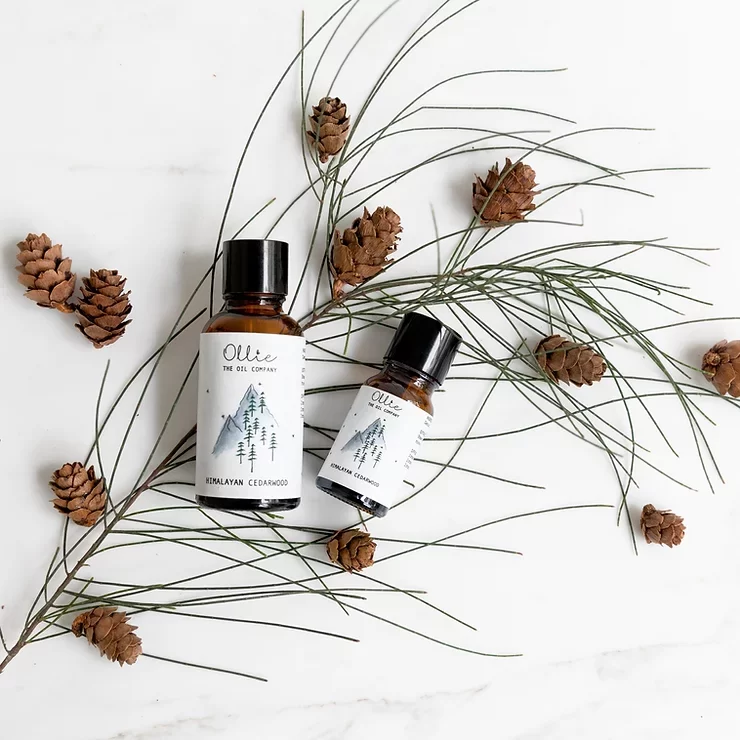
What Is Cedarwood Essential Oil?
- Ancient oil, believed to be the first oil extracted
- Ollie’s oil is ethically sourced from the Himalayas which is an amazing variety
- Known for its warm, balsamic, and woody aroma, often used in perfumes
- Blends well with herbal, woody, and spicy oils
- Has a rich history and is often used in Ayurvedic remedies
- Antimicrobial – kills harmful bacteria
- Natural insect repellent – insects hate the pine scent
- Astringent – contracts pores and can relieve minor skin irritations
- Natural decongestant – clears sinuses and phlegm
- Helps with focusing the mind
What is cedarwood essential oil?
Himalayan cedarwood oil is special. It is believed to be the first essential oil to be extracted and used for its many benefits including traditional medicine, which means it has been used for several millennia!
Himalayan cedarwood oil is derived from the Himalayan cedarwood tree (Cedrus deodara). This tree, also known as Deodar, is a tall and elegant coniferous tree which grows in the foothills of the world’s tallest mountains – The Himalayas. It is native to the western Himalayas near the Indian state of Himachal Pradesh.
Cedarwood trees are famed for their antibacterial, antifungal, deodorizing, insecticidal, and healing properties. It’s no wonder that the ancient Indians used the oil of this tree extensively in Ayurveda remedies, treatment of wounds, disinfecting their surroundings, food storage & preservation, and to freshen the air. This makes it sacred to the Indian culture. In fact, the word Deodar comes from the sanskrit words meaning Divine Tree. Cedarwood groves were popular with sages who revered this tree for its drooping and shady boughs, and also for its various medicinal properties. Imagine what it could do for you!
What does cedarwood essential oil smell like?
Cedarwood essential oil has wonderful aromatherapeutic properties. It is a popular addition in perfumes, air fresheners, and aromatherapy. It’s warm, balsamic, woody aroma with a subtle hint of spice makes for a great base note in perfumes and diffuser blends.
How is cedarwood essential oil produced?
Cedarwood essential oil is produced by steam distilling the wood. Cedar wood stumps, shavings, and roots are distilled using high pressured steam to release their oils. The oil is then collected and purified.
Did you know? Cedar trees can live up to 600 years!
The cedarwood tree grows natively on the foothills of the Himalayan mountains. It prefers cool climates and sloping landscapes, and grows between attitudes of 1000m to 3000m.
Although it grows extensively in the Himalayan region, cutting down the trees is discouraged because of the threat of over-exploitation. Cedar trees are not only famous for their essential oil; they are also a source of high-quality, pest resistant wood for the construction of temples, boats, food storage structures, railway tracks, and other wooden structures.
Unfortunately, because of overgrazing and overharvesting, many ancient cedar forests have been wiped out. In order to conserve the remaining wild cedar woodlands and also encourage propagation of the species, cutting down of cedar trees for their wood and other products is discouraged.
Sustainability is paramount for me. Sourcing my oil through sustainable and non-harmful methods is non-negotiable!
I distill my cedarwood oil from cedar wood stumps that are uprooted or fallen from wind. None of my cedarwood oil comes from trees that are cut down. It is entirely made from coarse woody debris from parts of the tree that have fallen down naturally. The yield is about 35%. We distill most of our oil from the roots of the cedar tree. Dead roots of fallen trees are also dug out for oil extraction. Typically, roots of the cedar tree have a higher oil content. We maintain sustainability and also get higher quality oil – win-win for me and for you!
What does cedarwood essential oil blend well with?
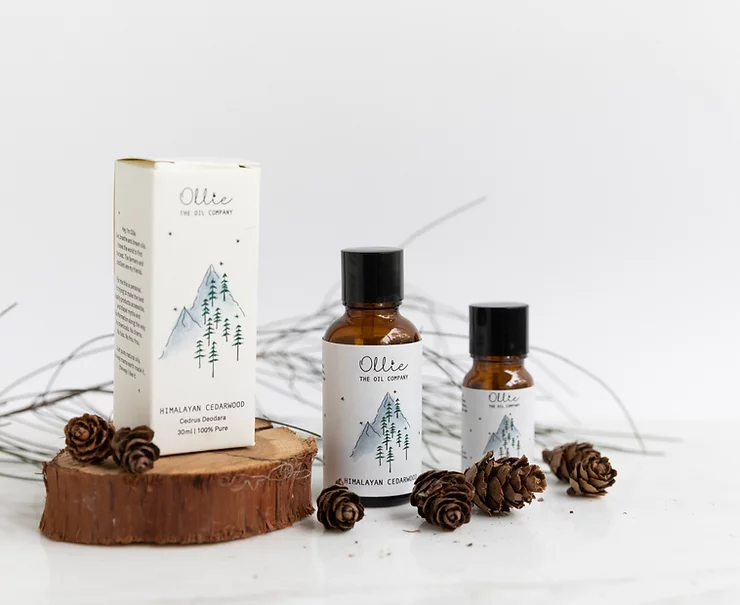
Many recipes featuring essential oils call for the blending of different oils. Blending oils is an art and a science but doing it right ensures that the different oils work in harmony.
When you blend essential oils together, the oils balance out the weaknesses of each other and can even negate any side effects that occur when the oil is used on its own. In the aromatherapeutic use of essential oils, blending different oils together ensures that certain scents linger for longer.
Cedarwood oil is considered to be a warm oil. It’s piney, woody scent makes it great for blending with herbal oils, woody oils, and other spicy essential oils.
Suggested blends featuring cedarwood oil and herbal oils:
- 3 drops of Ollie’s Himalayan Cedarwood Oil + 1 drop of clary sage oil
- 3 drops of Ollie’s Himalayan Cedarwood Oil + 2 drops of Ollie’s Peppermint Oil
- 2 drops of Ollie’s Himalayan Cedarwood Oil + 1 drop of Ollie’s Kochi Lemongrass Oil
Suggested blends featuring cedarwood oil and woody oils:
- 3 drops of Ollie’s Himalayan Cedarwood Oil + 1 drop of Ollie’s Mysore Sandalwood Oil
- 2 drops of Ollie’s Himalayan Cedarwood Oil + 1 drop of clove bud oil
- 2 drops of Ollie’s Himalayan Cedarwood Oil + 2 drops of Cypress oil
Suggested blends featuring cedarwood oil and spicy oils:
- 2 drops of Ollie’s Himalayan Cedarwood Oil + 1 drop of Ollie’s Ceylon Cinnamon Bark Oil
- 3 drops of Ollie’s Himalayan Cedarwood Oil + 2 drops of Ollie’s Somali Frankincense Oil
- 3 drops of Ollie’s Himalayan Cedarwood Oil + 1 drop of Ollie’s Australian Tea Tree Oil
How do you choose the best cedarwood essential oil from its different varieties?
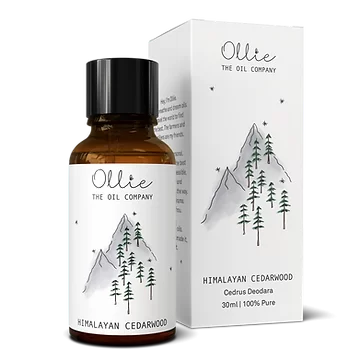
There are 5 different varieties of cedarwood oil. So which one should you choose? Let’s do a little comparison.
Himalayan Cedarwood Oil
- Highly anti-inflammatory
- Insecticidal and antifungal properties
- Clears chest congestion and sanitizes surfaces
- Originates in India
- Woody, sweet aroma
Atlas Cedarwood Oil
- High in antimicrobial properties
- Ideal for skin care, face serums, and lotions
- Originates in the Mediteranean region
- Very deep masculine aroma
Chinese Cedarwood Oil
- Milder properties
- Good for pain relief
- Muscle relaxant properties
- Mild woody aroma
- Not true cedar
Texas Cedarwood Oil
- Helps with hair growth
- Improves blood circulation
- Sweet pine scent
- Not true cedar – belongs to the juniper family
Virginian Cedarwood Oil
- Helps reduce anxiety and stress
- Clears chest congestion
- Reduces swelling and skin redness
- Mild pine scent
- Not true cedar – belongs to the juniper family
As you can see, the different forms of cedarwood oil have different properties. Three out of five cedarwood oils are actually considered to not be true cedars. Chinese cedar, Texas cedar, and Virginian cedar are all from a closely related tree to cedarwood called the Cypress tree. While they do have good properties of their own, they cannot be used regularly because of nerve damaging compounds called thujone.
I highly recommend cedarwood oil users to stick to the “true” cedars such as Himalayan cedarwood oil or Atlas cedarwood oil. They both contain a great mixture of all the healing properties of cedarwood oil and have no harmful side effects. Both varieties of cedarwood oil have a wonderful rich aroma that will elevate your aromatherapy experience.
What is cedarwood essential oil used for?
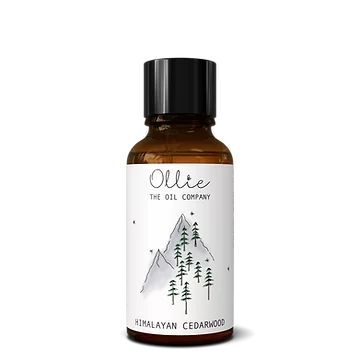
Cedarwood oil has grounding aromatic properties and healing medicinal properties. Here are the benefits you can enjoy from just a few drops of cedarwood oil:
- Antimicrobial (antibacterial, antiviral, antifungal)
- Natural insect repellent
- Astringent (makes pores contract)
- Decongestant (clears phlegm)
- Deodorizing
- Base note in perfumes and fragrances
- Aromatherapy
This list just a very brief look into cedarwood oil’s wonderful properties.
You can combine it with other essential oils or use it on its own. You will be amazed at how many things you can use cedarwood oil for. From treating dandruff to making your own air freshener, cedarwood essential oil is must-have in your essential oil collection.
For all you science fans in the Ollie tribe, are you ready to learn about the chemical composition of cedarwood oil? Here we go!
Cedarwood oil is made up of chemical compounds called sesquiterpenes (ses-kwi-ter-peens). There are different sesquiterpenes within cedar oil. The main compounds in Himalayan cedarwood oil are:
- Alpha-pinene: Anti-inflammatory, antimicrobial, ulcer healing, and gastroprotective.
- Himachalol: Insecticidal, spasmolytic, aromatic
There are other terpenes found in Himalayan cedarwood oil such as:
- Beta-pinene: Antiseptic, decongestant, memory improver
- Benzaldehyde: Aromatic
- Cedrol: Antioxidant, deodorizing, sedative
That is a lot of benefits from just one essential oil!
So how can you use cedarwood essential oil in your daily life?
Uses of Cedarwood Oil
Cedarwood oil for hair care
- 35 million men and 21 million women suffer from hair loss worldwide.
Hair loss is treatable. Cedarwood oil is one of the best additions to your hair care regime as it reduces hair loss and promotes new hair growth. One reason for this is that cedarwood oil has powerful anti-inflammatory properties. Many hair loss problems are caused by our body attacking hair follicles, resulting in inflammation, infections, and thus hair loss.
Another great use for Ollie’s Himalayan Cedarwood Oil is to treat Seborrhoeic Eczema. This is a common scalp disease which results in raised, inflamed, itchy and flaking rashes. It is caused by an infection of sebum glands in the scalp.
Thanks to cedarwood essential oil’s healing, antiseborrheic and anti-inflammatory properties, this oil is a great remedy to treat and lessen the symptoms of seborrhoeic eczema and seborrhoeic dermatitis.
Cedarwood oil can also be used to treat alopecia areata, dandruff, and other hair & scalp conditions. Use our recipe (in the next section) to make your own scalp massage oil to promote hair growth and reduce scalp irritation.
Improve memory and focus
- Singaporeans spend an average of 3.4 hours a day staring at their smartphones.
- Did you know that regular use of smartphones has resulted in us having poorer attention spans, frequent memory lapses, and poor focus?
- The average attention span for a person these days is a mere 8.25 seconds, a 33% decrease from the early 2000’s, when smartphones were not yet invented.
In this technology-immersed world, where everything is at our fingertips, both children and adults are seeing a decrease in attention spans and increased reports of forgetfulness. A lot of us are struggling to focus on tasks for more than a few minutes. Many old folks often complain about this, calling the younger generation the “goldfish generation”.
This is not surprising, considering that our constant use of smartphones and computers is wrecking our ability to focus and sustain attention.
Here’s an interesting fact: sages and wise men of long ago would seek out cedarwood forests to meditate in because it was believed that the smell of cedarwood helps improve focus. Properties in cedarwood oil have memory-enhancing effects and its calming properties will help soothe your jittery mind, allowing you to focus better.
Are you a parent trying to get your child to focus on their lessons? Try our memory-enhancing diffuser blend which will help them study better. Recipe in the next section!
Natural Insect Repellent
The 5 most common insects in Singapore are flying termites, bees, mosquitoes, flies, and cockroaches. All of them can be repelled by cedarwood oil! The pine scent from the oil repels insects. Compounds in the oil are also toxic to some insects.
Create your own insect-repelling floor cleaner to get rid of those pesky insects. I have shared my own recipe below! This works well for not only the common insects that invade our homes, but also keep away other critters like fleas, ants, and moths.
Relieve asthma and bronchitis
- 5% of adults and 20% of children in Singapore suffer from asthma.
- Untreated asthma can lead to permanent damage to the lungs and inflammation of the breathing system.
Bronchitis and asthma are both extremely common respiratory disorders. The elderly, smokers, and children are especially vulnerable to these issues. It causes shortness of breath, frequent colds, coughs, and exhaustion. Untreated asthma and bronchitis can cause lung scarring and lowered oxygen absorption. This, in turn, will negatively affect body functions because our body’s cells slowly start to die out when they do not receive sufficient oxygen.
Cedarwood oil, when combined with regular treatment for asthma and bronchitis, can reduce the severity of symptoms and improve lung health. In India and the Mediterranean regions, people suffering from asthma and other breathing disorders were encouraged to sit near cedar trees during morning and evenings to breathe in the medicinal vapours released by the tree.
Cedarwood Oil is a natural air-freshener
Have you ever been up in the mountains and smelled the fresh, sweet scent of pine? It was refreshing and invigorating wasn’t it?
Alpha- and Beta-Pinene, the same compounds found in many pine trees, is what gives cedarwood oil its fresh pine scent. Use them to make your room smell fresh and remove any bad odours. Besides refreshing your room, the smell of pine has also been shown to reduce anxiety, stress, and hypertension.
The ancient Japanese practise of Shinrin-yoku, has echoes in the restorative effects of pine. While Shinrin-yoku was not only targeted to cedar forests, the idea behind it is that smelling the aroma of pine and related trees will help lower hostility and improve your mood, all while purifying the air.
Cedarwood oil is a great addition to your aromatherapy sessions as well. Make your own air-purifying diffuser blend in a few simple steps:
- 5 drops of Ollie’s Himalayan Cedarwood Oil
- 2 drops of Ollie’s Nilgiri Eucalyptus Oil
- 1 drop of Ollie’s Lemon Oil
All three essential oils in this air-purifying diffuser blend are known to remove bad odours from the environment, cleanse the air, and improve mood, reduce stress, and calm the mind.
Additionally, cedarwood oil has wonderful sedative properties.
The piny smell of cedarwood promotes feelings of relaxation and sleepiness. Make a simple pillow spray with Ollie’s Himalayan Lavender Oil to fall asleep faster and experience deeper sleep.
- 3 drops of Ollie’s Himalayan Cedarwood Oil
- 2 drops of Ollie’s Himalayan Lavender Oil
- 2 tablespoons of water
- Spray bottle
Combine everything in a spray bottle, give it a good shake and spray around your pillow and on your mattress for a good night’s sleep.
DIY recipes with cedarwood oil
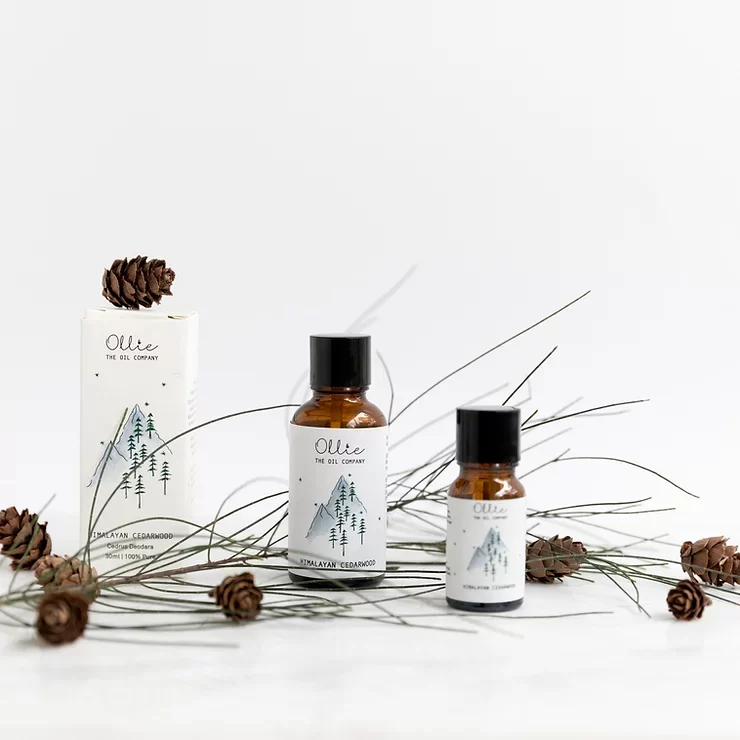
Alright… We have gone through extensively all the ways that cedarwood essential oil is awesome and how you can use it. Now let me tell you exactly how to use it so that you can have a base from which to start from!
Homemade scalp massage oil
This homemade scalp massage oil can be used to combat hair loss, promote hair growth, and also acts as a remedy for seborrheic dermatitis, dandruff, eczema, and psoriasis of the scalp. This massage blend is easy to make and uses commonly found ingredients.
Ingredients:
- 6 drops of Ollie’s Himalayan Cedarwood Oil
- 2 drops of Ollie’s Australian Tea Tree Oil
- 2 drops of Ollie’s Himalayan Lavender Oil
- 2 ½ tablespoons of cold-pressed coconut oil
Combine all the ingredients together and massage onto your scalp once or twice a week. Let the massage blend sit on your scalp for 1.5 to 2 hours and then wash it off with cool water.
Cedarwood oil is an effective remedy for dermatitis, eczema, dandruff, and hair loss. Australian tea tree oil is a powerful antimicrobial and can get rid of infections that accompany scalp issues.
Lavender oil has anti-inflammatory properties and promotes faster hair growth. Coconut oil seals moisture in and has many natural healing properties of its own. Put them all together and you’ve got yourself a fantastic remedy for your scalp problems!
Memory-enhancing diffuser blend
Cedarwood oil is famed for its calming and memory-enhancing properties. In ancient times, teachers would conduct their classes under cedarwood trees because it was believed that the smell of cedar would stimulate memory function and improve attention & focus. Make your own memory and attention enhancing diffuser blend to help you focus on difficult tasks!
Ingredients:
- 4 drops of Ollie’s Himalayan Cedarwood Oil
- 2 drops of Ollie’s Somali Frankincense Oil
- 1 drop of Ollie’s Peppermint Oil
All three oils in this blend have traditionally been associated with improved clarity, freshness of mind, and better focus. Himalayan cedarwood oil and Somali frankincense oil have been used, since age immemorial, to deepen meditation practises and increase spirituality.
Homemade floor cleaner to get rid of bugs
Cedarwood Oil and other pine-scented oils are used to make natural floor cleaners. The pine scent drives away bugs. If you are someone who doesn’t like the idea of using harsh chemicals to clean your house then this natural homemade floor cleaner is perfect for you.
Ingredients:
- Plastic bucket
- 4 litres of hot water
- ¼ cup Murphy oil soap
- ¼ cup of liquid castile soap
- 7 drops of Ollie’s Himalayan Cedarwood Oil
- 4 drops of Ollie’s Peppermint Oil
- 3 drops of Ollie’s Himalayan Lavender Oil
- 3 drops of Ollie’s Lemon Oil
- 2 drops of Ollie’s Australian Tea Tree Oil
Mix all those essential oils, oil soap, and castile soap in the hot water and give it a good stir with a stick or a mop.
That is a lot of essential oils in one floor cleaner, I know! But this amazing combination of multiple essential oils is not only great at keeping away critters, but also keeps your floor germ-free! Additionally, you don’t have to worry about contaminating your house with harsh, synthetic chemical fumes that can cause skin and lung irritation in the long run.
The Takeaway
Himalayan cedarwood oil with its lovely woody aroma can be used in different essential oil blends. Its aromatherapeutic properties promote relaxation, improve concentration, and lower blood pressure. Cedarwood oil also has antimicrobial and anti-inflammatory properties that can be used to treat skin infections, promote healing and reduce pain.
Using cedarwood oil in your house, in the form of diffuser blends once a week or so, can even promote respiratory health and help reduce the symptoms of asthma and related breathing disorders. You can use cedarwood oil to purify the air in your house and breathe easy. That’s certainly something we could do with in these times!
And with that, I hope that you will be inspired to use this oil to aid you in your life. If you do, please share them with me!
Share your experience with me on social media! Tag me @ollie_oils on Instagram and @itsollie.oils on Facebook.
Once you’re done mastering this oil, why not try out the rest of amazing oils we have? Shop now!
Have an Ollie good day!





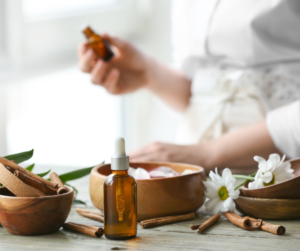
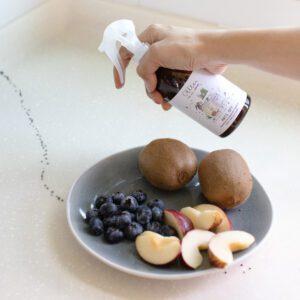

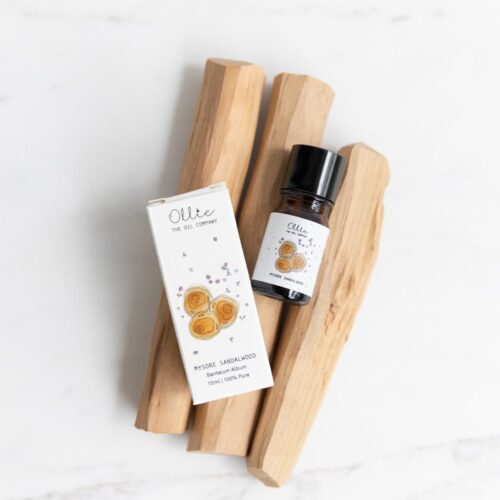
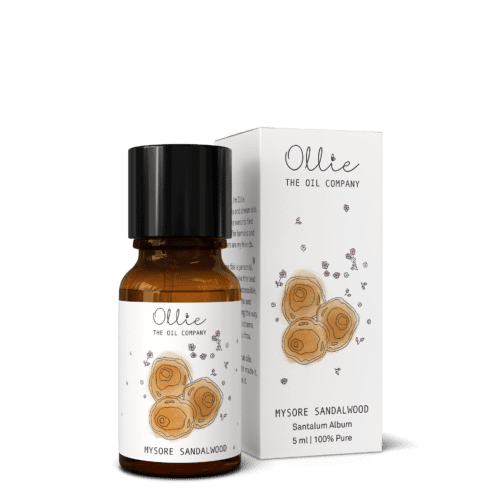
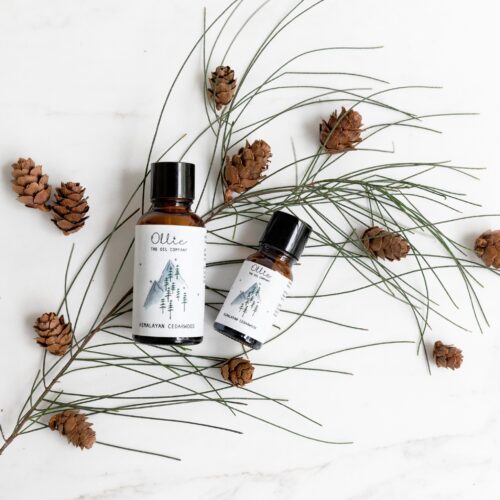
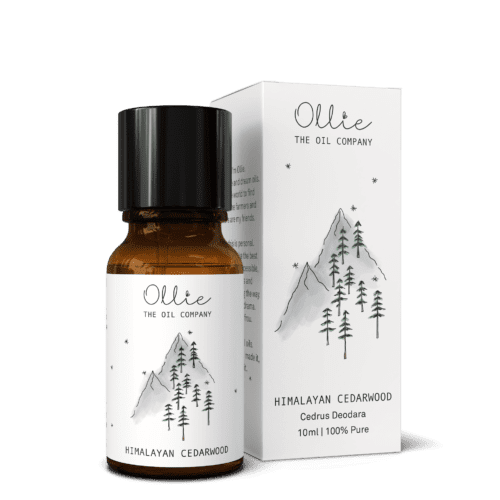

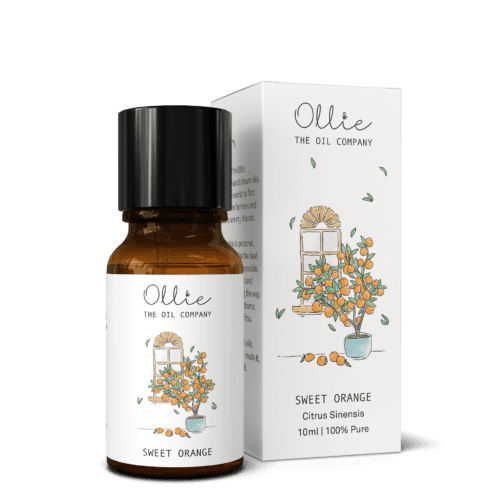

This Post Has 2 Comments
If I mix cedarwood oil and cinnamon oil together, what concentrate and ratio of oils should I use in one gallon of oil?
What are you trying to achieve with this blend?